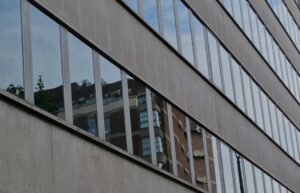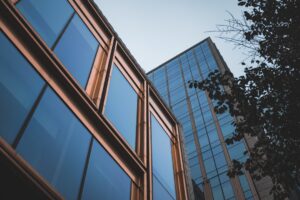Commercial window tinting, often overlooked, plays a crucial role in aligning with green building standards, particularly in regions like Griffin, GA, where energy efficiency and sustainability are increasingly prioritized. Premier Glass Coatings, led by John and Seth Rodie, has demonstrated profound expertise in this area, ensuring that their window tinting solutions not only meet but often exceed the stringent requirements set by green building certifications such as LEED (Leadership in Energy and Environmental Design).
Energy Efficiency and Reduction in Carbon Footprint
One of the primary compliance points of commercial window tinting with green building standards is its capacity to significantly improve a building’s energy efficiency. Window films designed by companies like Premier Glass Coatings can block a substantial portion of the sun’s infrared rays, which are responsible for heating the interior of a building. By reducing the heat gain during warmer months, these tints decrease the reliance on air conditioning systems, thus lowering energy consumption and the associated carbon footprint. For more insights, see The Impact of Window Tinting on Energy Bills: What to Expect.
For example, a recent project by Premier Glass Coatings in Peachtree City involved applying advanced solar control window films to a commercial building, which resulted in a 30% reduction in cooling costs. This project not only showcases their commitment to energy efficiency but also aligns with the global push towards carbon neutrality, a key component of many green building standards.
Enhancing Indoor Environmental Quality
Beyond energy savings, commercial window tinting contributes to another critical aspect of green building standards—indoor environmental quality (IEQ). Window films can filter out up to 99% of harmful ultraviolet (UV) rays, which not only protects occupants from potential skin damage but also prevents the fading of interiors, thus extending the life of furnishings and fixtures. This aspect of sustainability is often highlighted in green building frameworks, which emphasize resource conservation and occupant health.
In McDonough, GA, Premier Glass Coatings installed window tinting in a commercial office that reported significantly improved occupant comfort and reduced glare, factors that contribute positively to workplace productivity and wellbeing—key indicators of enhanced IEQ as per green building guidelines.
Compliance with Local and Regional Green Building Requirements
The integration of window tinting into commercial spaces also supports adherence to local and regional green building codes. In Fayetteville, GA, for instance, Premier Glass Coatings worked on a commercial retail complex where the installation of energy-efficient window films was part of the criteria for achieving the city’s green building certification. This project not only complied with local standards but also served as a testament to the adaptability of window tinting solutions to meet diverse regulatory environments. Learn more about choosing the right window tinting for different climates here.
Case Study: A Model of Sustainability
A notable case study in Newnan, GA illustrates the comprehensive benefits of commercial window tinting. The project involved a large corporate office where Premier Glass Coatings implemented a full-scale window tinting solution that aligned with both LEED and WELL Building Standards. Post-installation, the building experienced a 40% improvement in thermal comfort scores and a 25% decrease in energy used for heating and cooling. This case not only underscores the practical application of window tinting in meeting green building standards but also highlights its role in fostering a sustainable business practice.
Conclusion
Commercial window tinting, as demonstrated by Premier Glass Coatings, is a pivotal yet often undervalued strategy in achieving compliance with green building standards. Through the strategic application of window films, businesses can significantly enhance their energy efficiency, improve indoor environmental quality, and meet rigorous local and international sustainability criteria. In the context of green building, window tinting is not merely an aesthetic enhancement but a crucial component of modern, sustainable architectural practices. For further reading on green building standards, visit the U.S. Green Building Council.







